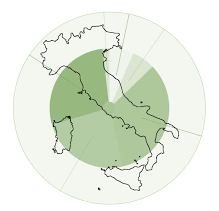The phenomenon of stillbirth, or birth without life, represents one of the most profound and least visible tragedies in global health. Every year, millions of families face the pain of losing a child in the womb, an event that affects them personally, familially and socially, but receives surprisingly little attention. The global data are telling: in 2021, 3.03 million stillbirths occurred, equivalent to about one every ten seconds.
This problem affects not only low- and middle-income countries, but also manifests itself in more developed nations, where advanced health systems fail to fully eliminate the risk. In a global landscape where other health challenges-from neonatal mortality to under-five mortality-are gaining more attention and resources, stillbirth mortality continues to be treated as a marginal issue, despite the enormous emotional, economic and health impact it entails.
A new study conducted by the team of collaborators from the Stillbirths unit of the Global Burden of Disease and published in The Lancet, which analyzed a 30-year data set i.e., from 1990 to 2021, has shed new light on the problem.
The dimensions of the problem
Stillbirth, defined as fetal death after a certain gestation threshold, varies in rates and how it is measured among countries. Globally, the stillbirth rate (SBR) is about 23 stillbirths per 1000 births for pregnancies over 20 weeks. When a higher threshold, such as 28 weeks, is considered, the rate decreases slightly but still remains significant.
TheEvery Newborn Action Plan (ENAP), an initiative of the United Nations, has set a goal of reducing the global birth rate to less than 12 per 1,000 births by 2030. However, progress is slow and uneven. Only 3 percent of low- and middle-income countries are currently on track to meet this goal, while in many areas of the world the situation remains stagnant or even worsens.
Global inequalities: a crisis rooted in geography and income
Inequalities in stillbirth rates deeply reflect global economic and social disparities. About 75 percent of stillbirths occur in two main regions: sub-Saharan Africa andSouth Asia.
In sub-Saharan Africa, where the average rate is 28 stillbirths per 1,000 births, factors such as limited access to health services, insufficient skilled medical personnel, and poor health infrastructure compromise the safety of pregnancies. Mothers often do not receive adequate prenatal care, and complications during delivery-such as infection, hemorrhage, or fetal distress-become deadly.
In South Asia, with an average rate of 25 per 1000, other barriers play a key role. Gender discrimination, which limits women’s access to timely medical care, is combined with economic factors that discourage the prevention and treatment of obstetric complications.
In high-income countries, birth-mortality rates are significantly lower, but not nonexistent. For example, in Italy and Belarus, although they have advanced health systems, progress in reducing natimortality is slower than in reducing neonatal mortality. This suggests that natimortality receives lower priority than other maternal and child health issues.
The causes of natimortality
Stillbirth can be attributed to a wide range of causes, often preventable. According to theWorld Health Organization (WHO), the main ones are:
-
Complications during childbirth: Fetal distress, prolonged labor, and lack of skilled obstetric care are common factors in low-income countries.
-
Maternal infections: Diseases such as malaria, syphilis and urinary tract infections can result in fetal death, especially in areas with limited availability of antibiotics or other therapies.
-
Chronic maternal conditions: Hypertension, diabetes, and autoimmune disorders can increase the risk of stillbirth, especially when not monitored and treated adequately.
-
Pregnancy-related problems: Placenta previa, placental abruption, and intrauterine growth retardation are significant risk factors.
In many countries, the lack of audits of natimortality cases prevents the precise causes from being identified and corrective measures from being taken.
The impact of the COVID-19 pandemic.
The COVID-19 pandemic has further exacerbated the problem of stillbirth, especially in low- and middle-income countries. Lockdowns, movement restrictions, and pressure on health systems have reduced access to prenatal care, leading to an increase in cases.
A study in 12 countries showed a significant increase in the rate of stillbirths during lockdown periods, linked primarily to delayed care and women’s reluctance to go to hospitals for fear of infection. Even in high-income settings, such as the United Kingdom, there were worrying increases, showing how the pandemic had a cross-sectional impact.
The problem of underestimation
One of the main obstacles to combating stillbirth is underestimation of the phenomenon. Available data are often incomplete or unreliable, especially in low-income countries where many stillbirths go unrecorded.
This underestimation is amplified by differences in definition thresholds: while some high-income countries count stillbirths from 22 weeks’ gestation, many low-income countries use the 28-week threshold. As a result, a significant proportion of stillbirths – up to 30 percent globally – are not counted, preventing an accurate analysis of the problem.
Possible solutions
Reducing natimortality requires a multifactorial approach that combines medical interventions, health policies, and social awareness. Priority actions include:
-
Improve access to prenatal and obstetric care: Skilled care during pregnancy and childbirth is essential to prevent complications. Investing in health care infrastructure and training skilled personnel can make a difference.
-
Promote audits and data collection: Analyzing natimortality cases enables identification of root causes and targeted measures.
-
Raising community awareness: In many societies, stillbirth is considered taboo. Breaking the silence on this issue can help families seek and obtain needed care.
-
Invest in research: Targeted studies, especially in low-income countries, can provide new solutions to prevent stillbirths.

